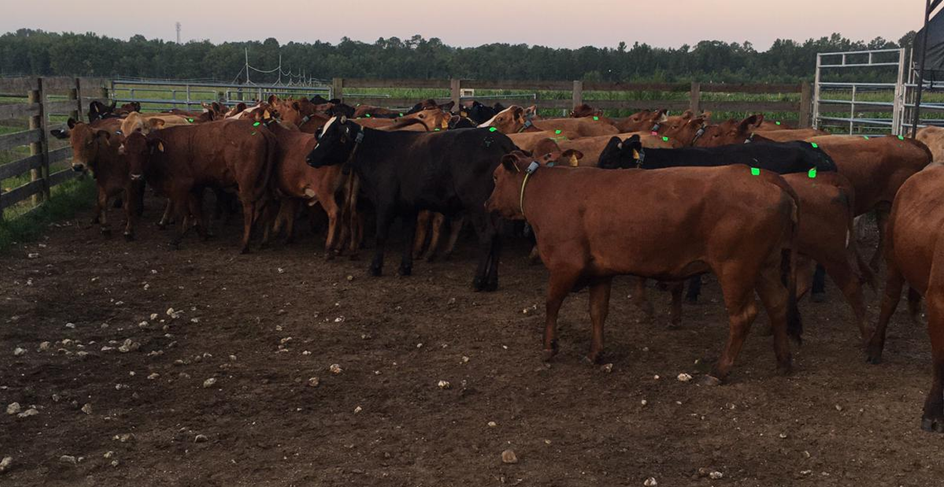Getting cows bred and keeping them pregnant is key to capitalizing on the record cattle…
How to Increase Breeding Results With Sexed Semen
Advancements in artificial insemination (A.I.) for beef cattle have come a long way in the past few decades. One reproductive technology with the potential to improve management and bottom lines even further for producers is sexed semen.
Utilizing the latest technology and protocols, producers can achieve sexed semen breeding results similar to what can be done with conventional A.I. Sexed semen allows them to focus different matings in their herds for terminal or maternal traits.
Cow herds needing to expand rapidly can now achieve this goal by breeding for heifers with the maternal traits they want. If the feedlot is the end destination, more males can be selected with a focus on feed efficiency and carcass merit to improve overall profitability.
Prior to joining Texas A&M University, I led a research study at South Dakota State University to examine ways to skew a calf crop in terms of sex and its economic impact. The goal was to see if sexed semen could be successfully and practically utilized at the commercial level. The study started in 2017 using six different commercial herds in South Dakota with 500 head or fewer.
The herds were transitioned from natural service to traditional timed A.I. and finally to timed A.I. with sexed semen through three consecutive breeding seasons.
Pairing with estrus detection
A key finding from the study was that pairing sexed semen with estrus detection aids, like breeding indicator patches, can help producers reach conception rates near those of conventional semen.
Fixed-timed A.I. utilizing a seven-day Cosynch plus a controlled internal drug release (CIDR) protocol was administered across cows and heifers in the study. After CIDR removal, an Estrotect breeding indicator was applied to cattle for chuteside estrus detection at the time of A.I.
At the time of breeding, the breeding indicator patches were then categorized for estrus intensity based on the amount of surface ink that rubbed off:
Unactivated = less than 25% ink rubbed off
Partially activated = 25% to 75% ink rubbed off
Fully activated = greater than 75% ink rubbed off
Final results showed cows and heifers bred with fully activated breeding indicator patches to sexed semen resulted in conception rates that were 89% of the conception rates of conventional semen. This meant if animals with activated patches had 65% conception rates with conventional semen, they would have 58% with sexed semen.
Conception rates for partially activated patches were 82% for sexed semen versus conventional semen. Head-to-head sexed semen resulted in 59% conception rates with partially activated patches, and 72% conception rates with conventional semen.
Unactivated patches saw conception rates drop to only 59% compared to conventional semen. So animals that had unactivated patches had 45% conception rates with conventional semen and 26% conception rates with sexed semen.
The research reinforces that if you breed with sexed semen, you will have greater success with it when cows and heifers are showing high estrus intensity. You can’t follow a fixed timed-A.I. program and expect the same outcomes. You need to detect estrus, too.
Implementing sexed semen
Knowing sexed semen can be utilized with similar success relative to conventional A.I. provides confidence for its use widely on farms and ranches.
Here is a breeding protocol to consider that yields both quality replacement females to retain and terminal calves to market:
Sixty percent of females (the animals displaying high estrus intensity with fully or partially activated breeding indicator patches) are A.I.’ed with sexed semen from maternal sires.
Forty percent of females (the animals not showing estrus or with lower estrus intensity via breeding indicator patches) are bred to terminal sires with conventional semen.
Following the timed-A.I. protocol, use cleanup bulls with terminal traits to breed the remaining females.
For a producer with 100 cows, the protocol creates around 25 replacement heifers born within a tight calving window. The remaining 75 head of terminally influenced calves can have genetics for increased weaning weights, resulting in a better payout when marketing directly off the farm or ranch. If retained ownership is an option, those terminally influenced calves could also have genetics focused on performance in the feedlot and on the packing rail.
Work with your veterinarian, extension specialist or genetics provider to develop the A.I. program that will best work for your herd.
Source:
- Source: Progressive Cattle, George Perry
- Date: September 2022
- Link: https://www.agproud.com/articles/55951-how-to-increase-breeding-results-with-sexed-semen



